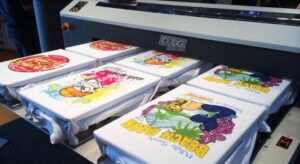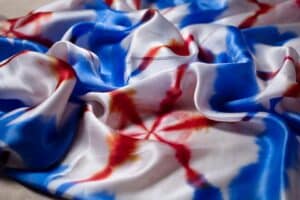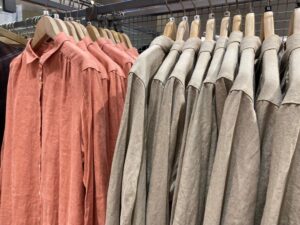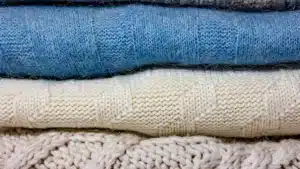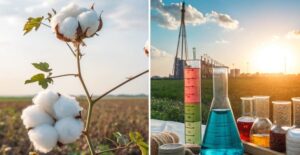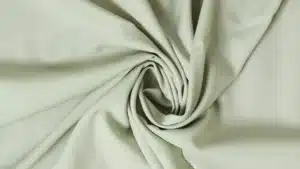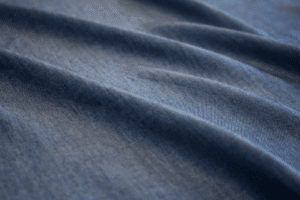Sustainability is reshaping the clothing industry, with brands and manufacturers seeking greener alternatives to traditional fabrics. But what are the best eco-friendly materials for clothing, and how do they reduce environmental impact?
Eco-friendly materials in clothing manufacturing are fabrics sourced from renewable, recycled, or biodegradable materials that minimize water, energy, and chemical use. These fabrics help reduce pollution, lower carbon emissions, and promote ethical production.
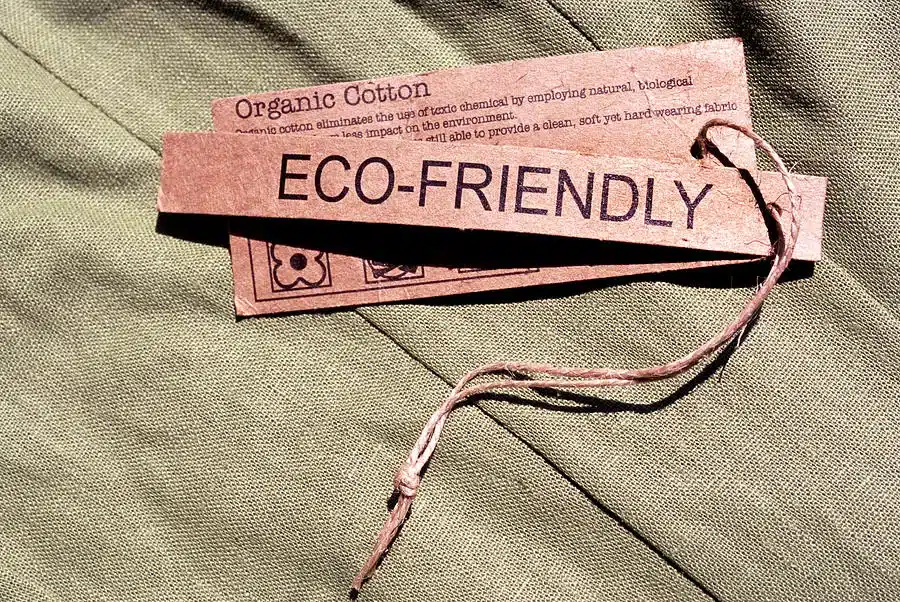
However, despite the advantages of sustainable fabrics, they also come with limitations. High production costs, limited availability, durability concerns, and scalability challenges can slow the adoption of these materials. Understanding both the benefits and limitations is essential for making informed decisions in sustainable clothing manufacturing.
Let’s explore the most sustainable fabrics and their benefits, along with the challenges they present.
Natural Eco-Friendly Fabrics
Natural fibers come from plants and animals, offering biodegradability and reduced chemical processing.
1. Organic Cotton
- Why It’s Sustainable: Grown without pesticides, reduces water usage.
- Common Uses: T-shirts, underwear, casual wear.
- Key Benefit: Softer and hypoallergenic compared to conventional cotton.
2. Hemp
- Why It’s Sustainable: Requires little water, naturally pest-resistant.
- Common Uses: Jackets, pants, accessories.
- Key Benefit: Durable, breathable, and UV-resistant.
3. Linen (Flax Fiber)
- Why It’s Sustainable: Made from the flax plant, requires minimal processing.
- Common Uses: Dresses, shirts, summer wear.
- Key Benefit: Lightweight, moisture-wicking, biodegradable.
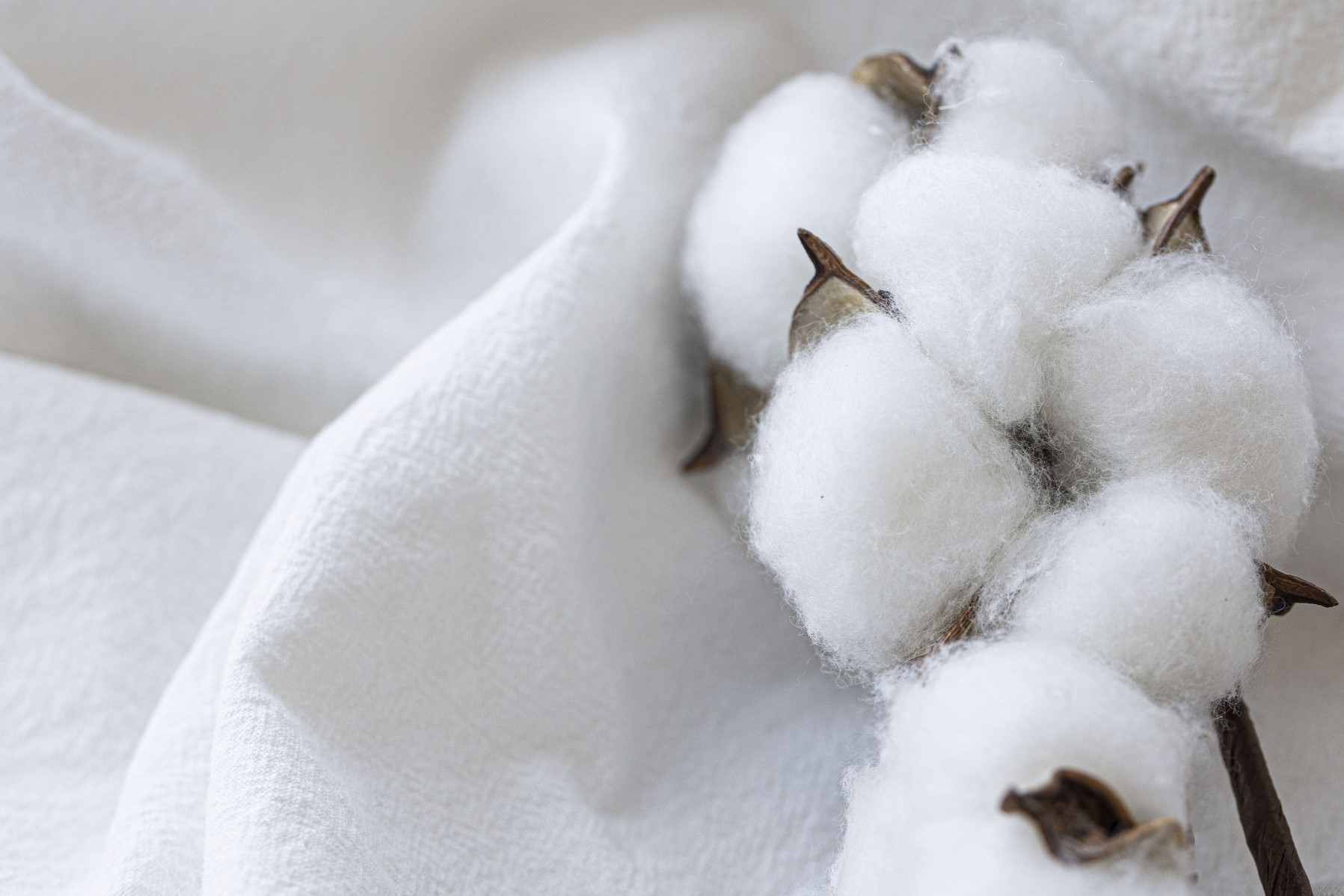
Regenerated & Recycled Fabrics
These fabrics use innovative processes to repurpose waste or create biodegradable textiles from renewable sources.
4. Tencel (Lyocell & Modal)
- Why It’s Sustainable: Produced in a closed-loop system using wood pulp.
- Common Uses: Activewear, soft apparel, loungewear.
- Key Benefit: Smooth texture, moisture management, biodegradable.
5. Piñatex (Pineapple Leather)
- Why It’s Sustainable: Made from pineapple leaf fibers, reducing agricultural waste.
- Common Uses: Vegan leather jackets, shoes, bags.
- Key Benefit: Leather alternative without animal cruelty.
6. Recycled Plastic (rPET)
- Why It’s Sustainable: Repurposes plastic bottles, reducing landfill waste.
- Common Uses: Sportswear, outdoor clothing.
- Key Benefit: Strong, moisture-wicking, and reduces plastic pollution.
7. Econyl (Recycled Nylon)
- Why It’s Sustainable: Made from recycled fishing nets and industrial nylon waste.
- Common Uses: Swimwear, leggings, activewear.
- Key Benefit: Durable, stretchy, and promotes circular fashion.

Bio-Based & Alternative Materials
New technologies are introducing innovative, plant-based alternatives to synthetic fabrics.
8. Bamboo Fabric
- Why It’s Sustainable: Fast-growing plant, requires no pesticides.
- Common Uses: Socks, underwear, activewear.
- Key Benefit: Soft, antibacterial, and moisture-wicking.
9. Mycelium Leather (Mushroom Leather)
- Why It’s Sustainable: Grown from fungi, biodegradable, and cruelty-free.
- Common Uses: Bags, shoes, outerwear.
- Key Benefit: Leather-like texture with lower carbon footprint.
10. SeaCell (Seaweed Fiber)
- Why It’s Sustainable: Made from seaweed and cellulose fibers, chemical-free production.
- Common Uses: Yoga wear, sleepwear.
- Key Benefit: Rich in antioxidants, gentle on skin.
The Limitations of Eco-Friendly Materials
While sustainable fabrics offer many benefits, they also present challenges that manufacturers must consider.
1. Higher Production Costs
- Sustainable materials, like organic cotton and Tencel, often cost more than conventional fabrics due to specialized farming and processing techniques.
- Ethical labor and certifications further increase expenses, making eco-friendly garments less accessible to budget-conscious consumers.
2. Limited Availability & Scalability
- Many bio-based materials like mushroom leather and Piñatex are still in early-stage production and cannot yet meet mass-market demand.
- Sustainable fiber production depends on seasonal crops (e.g., hemp and flax), leading to supply chain inconsistencies.
3. Performance & Durability Concerns
- Some sustainable fabrics, such as bamboo viscose, require extensive processing to achieve softness, raising concerns about chemical use.
- Recycled materials like Econyl and rPET may degrade faster than virgin fibers, limiting their long-term performance.
4. Recycling & End-of-Life Challenges
- Blended fabrics (e.g., poly-cotton) are difficult to recycle because separating fibers is complex and expensive.
- Not all biodegradable fabrics break down efficiently in landfills—some require specific composting conditions.
Why Choose Eco-Friendly Materials in Clothing?
Despite these challenges, sustainable fabrics remain a better alternative to traditional textiles.
Advantages of Eco-Friendly Fabrics
| Benefit | Explanation |
|---|---|
| Lower Carbon Footprint | Uses fewer fossil fuels and emits less CO₂. |
| Reduced Water Consumption | Some materials require significantly less water to produce. |
| Biodegradable | Breaks down naturally, reducing landfill waste. |
| Less Chemical Pollution | Avoids toxic dyes, pesticides, and processing chemicals. |
Switching to sustainable fabrics allows brands to align with ethical and environmental goals while maintaining quality and functionality.
Conclusion
Eco-friendly materials in clothing manufacturing are essential for reducing fashion’s environmental impact. Whether using natural fibers like organic cotton and hemp, recycled materials like rPET and Econyl, or bio-based innovations like Piñatex and mycelium leather, manufacturers have many options to create sustainable and ethical clothing.
However, sustainability comes with limitations, including higher costs, scalability challenges, and recycling difficulties.
By adopting these materials and addressing their challenges, the clothing industry moves closer to a greener future—proving that style and sustainability can coexist.





